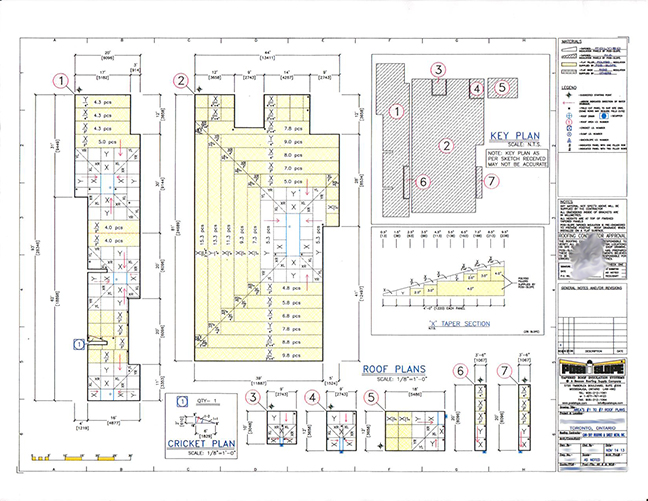Flat Roof Slope
A well-designed roof system incorporates a slope to the surface supporting the roof membrane – the substrate. Positive flat roof slope towards drainage points allows for accumulated water to drain sufficiently, mitigating the risk of roof ponding. After rainfall, some residual water is expected to remain on the surface of a flat/low-slope roof, but it must be drained adequately and with sufficient time.
Roof ponding often leads to premature membrane weathering and roof failure.
Flat roof slope is achieved in two ways:
1. Slope is built into the structure of the building—the structural roof deck is sloped so that any roof membrane installed overtop is sloping.
2. Slope is created using tapered insulation—a custom design and drawings for a building’s roof are drafted. Tapered insulation is cut and installed to those specifications and dimensions, creating a sloped substrate overtop the level roof deck. The roof membrane installed overtop now slopes.
If no slope is incorporated into the design, deflections in the roof deck and substrate often tend to create an uneven surface inevitably resulting in areas of ponding water.




